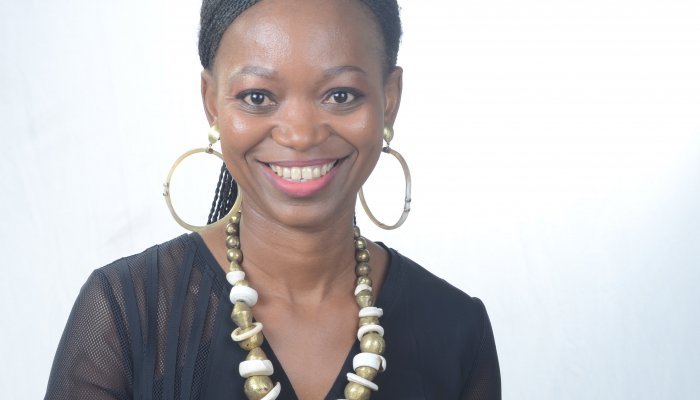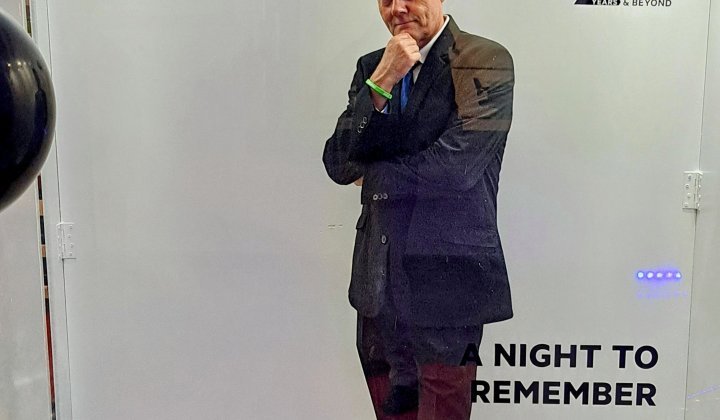Zipline delivers life-saving blood and medical supplies in Rwanda. Dronamics can deliver 350kg of cargo over 2,500km for a cost that is less than half of other aeroplanes across Europe. Flying taxis will eventually deliver passengers across Dubai and the rest of the world. So yes, it’s clear that the drone industry, which Goldman Sachs forecasts to be worth over US$100 billion, is reaching new heights. But some countries are still stuck on the ground.
“South Africa is missing out,” says Refilwe Ledwaba, a certified pilot and part-time lecturer specialising in airline economics, aviation’s regulatory environment, and the applications of drones in various fields. “We were at the forefront in establishing the regulatory framework, but it seems as if the technology is way ahead.”
Regulations are a double-edged sword
One instrumental person in this area is Sam Twala, founder and MD of Ntsu Aviation Solutions. As a qualified electronic engineer, he’s been involved in and passionate about the drone industry for over a decade. In 2012, while working for the Civil Aviation Authority, he led a team responsible for drafting drone regulations in South Africa.
“We were the first country to promulgate fully-fledged regulations,” he says. “And that was a great achievement at the time... Before any other country, it was clear in South Africa what was required if you wanted to operate a drone. And with the regulations being promulgated, we managed to have industries such as drone applications in mining thriving.”
However, Twala admits that the achievement was “a double-edged sword”. With no country to look to for guidance, the regulation process involved a lot of experimenting. And, as expected when trying something new, there were mistakes. Specifically, it seems that the regulations are, to some extent, a bit too strict.
“When you try to be too innovative, regulations don’t make provisions to accommodate you,” he says. “Yes, the fundamental understanding is that drones need to be regulated; I don’t think anyone has a different opinion when it comes to that because at the end of the day, safety is critical, and we don’t want to end up with disasters all over the place. But now the problem is striking the right balance between not stifling innovation, so businesses can thrive and making sure the industry remains safe.”
There’s more to drones than piloting
Twala looks to Europe, which categorises regulations based on risk, as something South Africa could adopt. So, for example, you may not need someone with a fully-fledged pilot’s license to fly a crop-spraying drone on a remote farm where the drone itself flies a few metres off the ground and won’t go more than one kilometre away. But if a drone were to transport cargo from Cape Town to Johannesburg, all the strictest rules should apply.
“At a minimum in South Africa, if you want to have a drone business, you need to go through a process that’s complicated for non-aviators,” he says. “And if you’re paying someone to assist you, that can be expensive and prohibitive to some extent. [But] it’s not all doom and gloom. We need to ask ourselves if it is possible for certain types of drone businesses to conduct operations outside of the ROC [Remote Operator Certificate, equivalent to that of an Aircraft Operator Certificate used by commercial airlines].”
A ROC holder can take off, fly, and land their drone. But Twala explains that a lot more goes on behind the scenes when preparing for a safe flight that does not necessarily require a license. This opens up more opportunities for manufacturers who want to design and build drones, software developers who want to create mobile applications for pilots, and analysts who make sense of the data drones collect.
“A lot of people think that the minimum requirement is to get a pilot’s license,” Twala says. “But it’s not. If you eventually want to be a licensed operator, that’s fine. But that doesn’t have to be where you start or where you end... Look at what people use drones for, what kind of challenges they go through, and what kind of opportunities there are. Then find a way to bring your skills and work with those who might already have a drone license. Ask yourself what you know that would benefit someone in the drone industry. That could be a good place to start.”
Drones must be integrated into the business context
One person thinking beyond just flying drones is Clive Mathe, founder and CEO of Kurai, which provides crop monitoring and crop management services to farms through drone technology, IoT devices, and machine learning.
“Drones have been here for the past few decades,” he says. “Prior to 2010, these drone systems were used by the defence industry. There was no cost justification to use them in other industries. But as time went on and the access of these systems increased, the cost element decreased, and it became feasible to use them in other sectors.”
Historically, the main interest has been in what drones can do. But, going forward, Mathe believes that entrepreneurs need to detach themselves from the obsession that drones can do everything. Instead, the focus should be on understanding that drones are simply tools that have to be integrated within a larger business context.
“Drones collect huge amounts of data,” he says. “With access to data comes the feasibility to use machine learning and artificial intelligence, which thrives on an abundance of data. And that’s where the key to unlocking the full potential of these applications lies. Currently, we’re seeing a direct, primary application of these systems. So guys just buy drones, collect data, and then define the raw data as the end product. But you need to move from that data to create information, knowledge, wisdom, and insights that are of value to clients.”
There are opportunities everywhere
Like Twala, Mathe also believes that manufacturing is another aspect that South Africa can tap into. Speaking from his aerospace engineering background, he sees a long history of design and development in the country but doesn’t believe that the nation is using that competitive advantage to manufacture drones locally or pushing that front as efficiently as it can.
“We have access to dozens and dozens of aerospace engineers who are highly capable of designing these systems, but we’re under-utilising our resources,” he says. “So these are definitely elements we have to tackle. How do we empower our engineers who also happen to be entrepreneurs? How do we empower the ecosystem to primarily focus on the advantages that we have? And how do we use the skills that we have, which certainly no other country in Africa does?”
Mathe agrees with Twala that the biggest opportunities lie beyond just flying drones, from analysing the data collected or getting involved at an even higher level by integrating these systems into existing business operations. And yet it’s been frustrating to see so many drone companies still struggling with scale, not to mention the fact that the market penetration for precision agriculture in South Africa is still less than 1%.
“I’m more interested in unlocking the market itself because that’s how we can define the value that becomes visible at a macroeconomic scale,” he says. “For me, these are the opportunities that we need to start focusing on. No one is experienced in this industry, so no one can claim that they are a market leader. There are huge opportunities that anyone who’s entrepreneurial can define in this industry.”
Make the industry more inclusive
As the MD of Girls Fly Programme Africa, Refilwe Ledwaba is also excited about unlocking the abundance of opportunities, not just for women but also for the youth, people with disabilities, and those who previously didn’t have access to technology like this in the aviation industry. And given that many of the jobs don’t need a university degree or a decade of experience, it’s possible to train people in a short space of time.
“When you look at the capability of this technology, you can see that we can leverage and address some of those challenges,” she says. “Coming from a ‘manned’ industry, which has many barriers to entry, we can build an inclusive and accessible industry that can provide opportunities for businesses and create jobs. But there needs to be structural change in terms of the regulations and an understanding of what we need to do in the country to be able to leverage all these opportunities.”
A deep dive on drones
Technology is driving the future of economies, as highlighted during the Covid-19 pandemic. Organisations that thrive in today’s market are the ones that are at the forefront of 4IR and 5IR, artificial intelligence, virtual reality, and new technologies.
Three of those emerging technologies are the unmanned aerial aviation, robotics, and space industries. In the context of these industries, there is an opportunity for South Africa to leapfrog a developing aviation industry and create a knowledge industry that can create opportunities for businesses and jobs.
The country is currently facing an unemployment rate of 32.5% and, in particular, a youth unemployment rate of 46.3%. There is an opportunity to leverage this brand new industry into an economic driver that will assist in creating opportunities for youth, women, people with disabilities, and SMMEs through a strategically developed ecosystem approach.
Source: Tamiko Sher, co-founder and executive director of the African Institute for Entrepreneurship, a non-profit research and thought leadership organisation established to focus on entrepreneurship opportunities of new industries and technology on a broad strategic basis. The publication, The Drone Industry in South Africa: The Potential of the Unmanned Aviation Industry (October 2021) is available online now.








